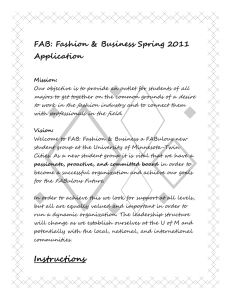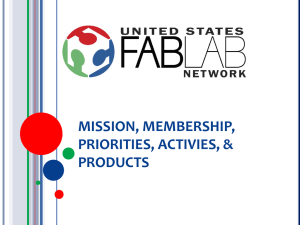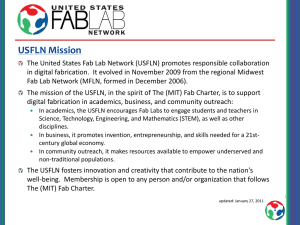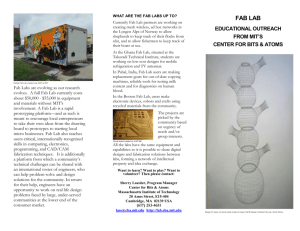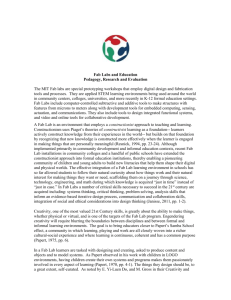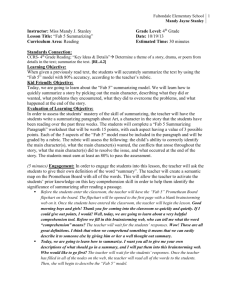Lateral Alignment
advertisement
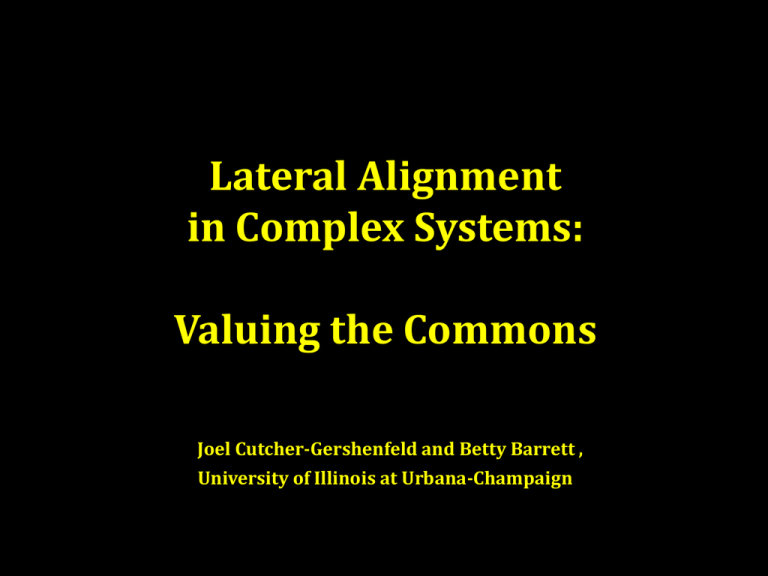
Lateral Alignment in Complex Systems: Valuing the Commons Joel Cutcher-Gershenfeld and Betty Barrett , University of Illinois at Urbana-Champaign A Key 20th Century Institutional Challenge: The Tragedy of the Commons “Therein is the tragedy. Each man is locked into a system that compels him to increase his herd without limit – in a world that is limited. Ruin is the destination toward which all men rush, each pursuing his own best interest in a society that believes in the freedom of the commons. Freedom in a commons brings ruin to all.” Garrett Hardin (1968). Tragedy of the Commons. Science, 162, 1243-1248. Norman W. Hudson, (1987), Soil Resources, Management and Conservation Service, Food and Agriculture Organization of the United Nations, Rome. Sample 21st Century Systems Challenges US Power Grid US Passenger Air Transportation System US Fab Labs Sources: Carolos A. Osario, ESD Doctoral Seminar, 2004, and Joel Cutcher-Gershenfeld US Internet Backbone http://www.xprt.net/~rolfsky/internetSite/internet.html Valuing the Commons Defining Lateral Stakeholder Alignment “The extent to which interdependent stakeholders orient and connect with one another to advance their separate and shared interests.” Selected Lessons/Propositions: 1. 2. 3. 4. 5. 6. 7. Shared vision (co-evolving) Leadership through influence rather than authority Core and periphery dances Internal alignment for lateral alignment Forums for “structural holes” Protocols and standards for leverage Trust as the foundation for partnership Stakeholder Alignment Model Tawantinsuyu – from Quechua for: “The Four Parts Together” Cultural Strategic Structural Behavioral Aligning Stakeholders: Steps in a Process 6. Continuous Improvement 5. Establishing Protocols and Standards 4. Chartering Forums 3. Constructing a Shared Vision 2. Ensuring Leadership, Facilitation & Expertise 1. Mapping Stakeholders and Interests Feedback Mapping of Stakeholders and Interests from US Fab Labs • Stakeholders from over 25 U.S. fab labs (n=79) were asked about their experience (negative to positive on a scale from 1 to 16) regarding fab lab operations and relations among fab labs. Here is the color coded scale: 0 1 2 3 4 5 6 7 8 9 10 11 2 13 14 15 16 • The combined stakeholder responses were converted into a new way of presenting the data – a cluster of color-coded hexagons (one for each stakeholder) that gives you a quick view or map of stakeholder interests. These are called “Z-Flowers” and here are three samples: • Note: Responses on all items are converted to “Z-Scores” with a mean of zero and a standard deviation of one so that they are comparable. The responses closest to the mean begin in the middle and they spiral out, with the outliers on the outer edges of the “Z-Flower” Sample Mapping: Overall Fab Lab Experience 0 1 2 3 4 5 6 7 8 9 10 11 2 13 14 15 16 The perception of stakeholders on their experience in a fab lab: • Coming up with designs on a computer in a fab lab (Mean=12.9) • Fabricating objects with the equipment in a fab lab (Mean=13.1) • Sharing and collaborating with others in a fab lab or the network of fab labs (Mean=11.8) Sample Mapping: Relations Among Fab Labs 0 1 2 3 4 5 6 7 8 9 10 11 2 13 14 15 16 Your experience with the following aspects of relations among fab labs in the US: • The overall level of collaboration and sharing among US fab labs (Mean=9.8) • The overall level of shared decision making among US fab labs (Mean=8.1) • The way in which standards and practices are established across US fab labs (Mean=8.5) • The way in which the network of US fab labs assists in the launch of new labs (Mean=9.5) Fab Lab Network Analogies “Its like a butterfly unfolding but it hasn't figured out yet how to smooth out the crinkles in its wings. . . let alone fly” “Like a herd of sheep and cattle and probably also horses. The network is this unruly animal with very different rules and motivations. So the network is the herder but with no training on managing this complex herd” “A press fit box with no opening” “It is like a big litter of new born puppies. . . not really knowing where they are going but full of energy and wanting to go somewhere” “It is like a hydra and head one needs to know what head nine is doing.” “Contagious creativity” “It is like an unfinished sculpture still rough around the edges but it looks like a work of art.” New Mobilization to Value the Commons: 21st Century Institutions “. . . We are moving towards another type of society than that to which we have become accustomed. . . There is no guarantee of our safe arrival. Not only are the interdependencies greater – they are differently structured. . . . The changes . . . demand a new mobilization of the sciences.” – Source: Eric L. Trust, from paper on “Social Aspects of Science Policy” (March, 1969) cited in Towards a Social Ecology: Contextual Appreciation of the Future in the Present by Fred E. Emery and Eric L. Trist (London: Plenum Press, 1973)
